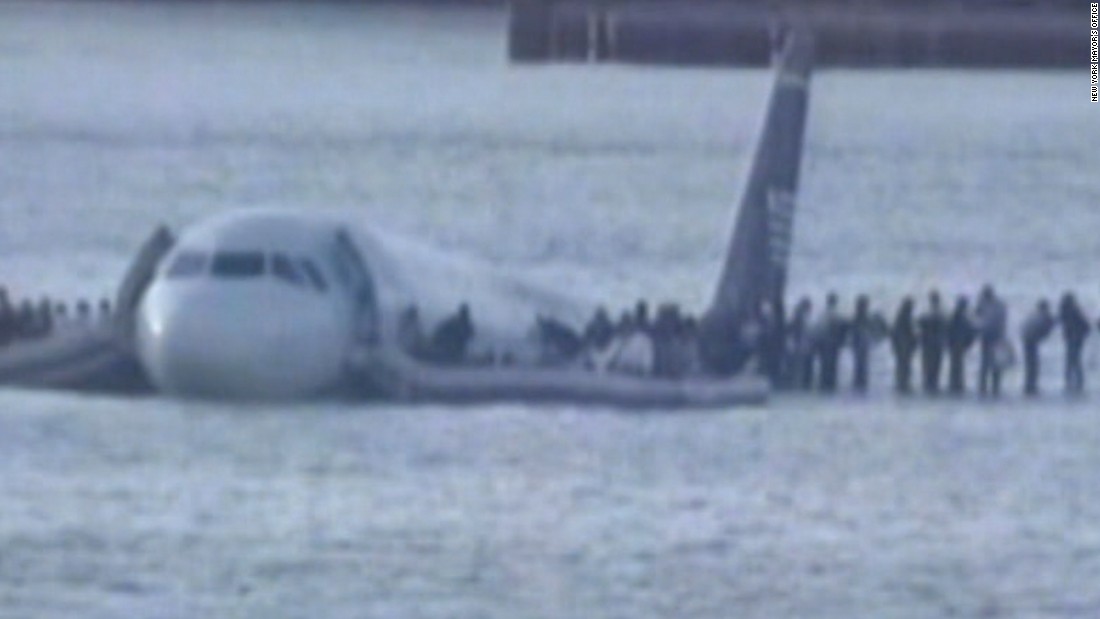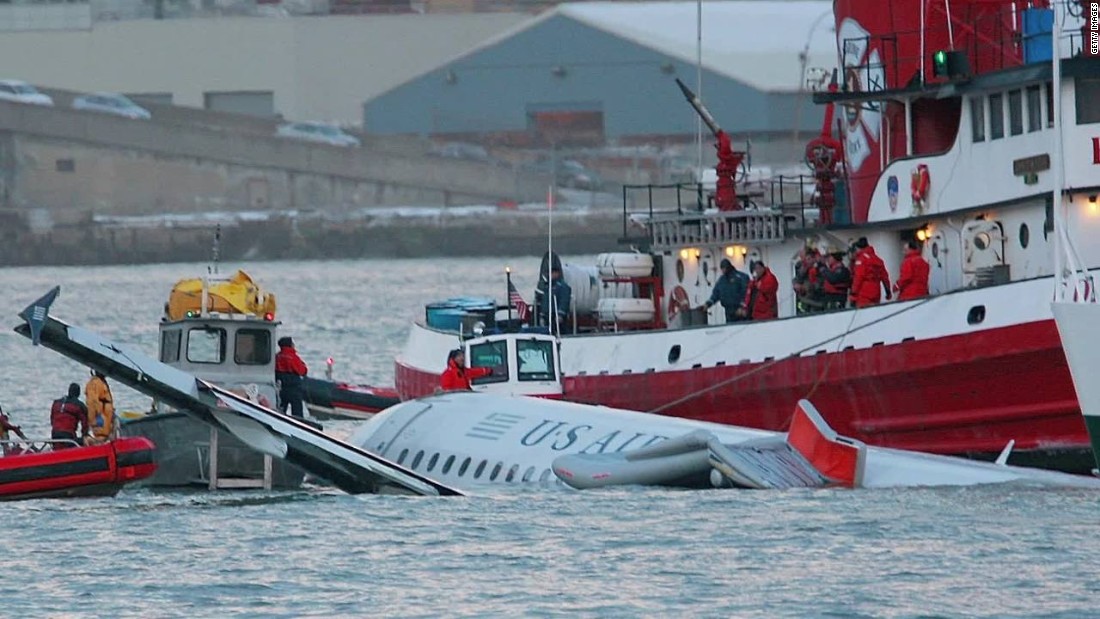Hudson River Airplane Accident: The Remarkable Story Of Survival
The Hudson River airplane accident, also known as the "Miracle on the Hudson," stands as one of the most remarkable stories in aviation history. It is an event that captivated the world and demonstrated the incredible skill and determination of the individuals involved. On January 15, 2009, US Airways Flight 1549 faced an unprecedented emergency, yet through the expertise of its crew, all 155 passengers and crew members survived. This incident remains a testament to human resilience and the importance of emergency preparedness in aviation.
The event unfolded when the Airbus A320, en route from New York City's LaGuardia Airport to Charlotte, North Carolina, encountered a flock of Canada geese shortly after takeoff. The bird strike caused both engines to fail, leaving the pilots with a dire situation. In the face of such adversity, Captain Chesley "Sully" Sullenberger and First Officer Jeffrey Skiles made the split-second decision to land the aircraft on the Hudson River.
This article delves into the details of the Hudson River airplane accident, exploring the events leading up to the incident, the actions taken during the emergency, and the aftermath. By examining this event, we gain insights into aviation safety, emergency response, and the human factor in high-stress situations.
Read also:Alejandro Lechuga The Rising Star You Need To Know
Table of Contents
- Introduction
- Background of the Incident
- Timeline of Events
- The Crew: Key Players in the Miracle
- The Hudson River Landing
- Rescue Operations
- Investigation and Findings
- Impact on Aviation Safety
- Lessons Learned
- Conclusion
Background of the Incident
The Hudson River airplane accident began with what seemed like a routine flight. US Airways Flight 1549 departed from LaGuardia Airport at 3:25 PM EST, destined for Charlotte Douglas International Airport. However, just three minutes into the flight, the aircraft encountered a flock of Canada geese at an altitude of approximately 2,818 feet. The impact of the bird strike caused both engines to fail, leaving the pilots with a critical decision to make.
Flight Details
US Airways Flight 1549 was operated by an Airbus A320, a modern aircraft known for its advanced systems and reliability. The flight carried 150 passengers and five crew members, including Captain Chesley Sullenberger and First Officer Jeffrey Skiles. The aircraft was equipped with state-of-the-art avionics, which played a crucial role in the pilots' ability to maintain control during the emergency.
Timeline of Events
The sequence of events leading up to the Hudson River landing was both rapid and critical. Below is a detailed timeline of the incident:
- 3:25 PM: US Airways Flight 1549 departs from LaGuardia Airport.
- 3:27 PM: The aircraft encounters a flock of Canada geese, causing both engines to fail.
- 3:30 PM: Captain Sullenberger informs air traffic control of the situation and declares an emergency.
- 3:31 PM: The decision is made to land the aircraft on the Hudson River.
- 3:32 PM: The plane successfully lands on the Hudson River.
Key Moments
Each moment in the timeline was crucial, with the pilots and crew making decisions that ultimately saved lives. The quick thinking and expertise of the crew were instrumental in ensuring a successful outcome.
The Crew: Key Players in the Miracle
The success of the Hudson River airplane accident can be attributed to the skill and professionalism of the flight crew. Captain Chesley "Sully" Sullenberger, a veteran pilot with over 40 years of experience, led the effort to safely land the aircraft. First Officer Jeffrey Skiles, also an experienced pilot, provided essential support during the emergency.
Captain Chesley Sullenberger
Captain Sullenberger's extensive experience in aviation, including his background as a flight instructor and accident investigator, prepared him for the challenges of the Hudson River landing. His calm demeanor and decisive actions were vital in ensuring the safety of everyone on board.
Read also:Ketchup Packet Pillow The Ultimate Comfort For Ketchup Lovers Everywhere
The Hudson River Landing
Landing an Airbus A320 on the Hudson River was an unprecedented feat. Captain Sullenberger and First Officer Skiles demonstrated exceptional skill in guiding the aircraft to a safe landing. The decision to land on the river was made after evaluating all available options, including nearby airports, and determining that a water landing offered the best chance of survival.
Factors in the Landing
Several factors contributed to the successful landing, including:
- The calm waters of the Hudson River.
- The expertise of the pilots in controlling the aircraft.
- The cooperation of air traffic control and emergency services.
Rescue Operations
Following the landing, a coordinated rescue effort was launched to retrieve the passengers and crew from the floating aircraft. Ferry boats, tour boats, and emergency vessels quickly arrived on the scene, working together to ensure everyone was safely evacuated. The swift response of the rescue teams played a significant role in the successful outcome of the incident.
Role of Emergency Services
Emergency services, including the New York City Fire Department and the U.S. Coast Guard, were instrumental in the rescue operation. Their preparedness and coordination with local authorities ensured a rapid and effective response.
Investigation and Findings
In the aftermath of the Hudson River airplane accident, the National Transportation Safety Board (NTSB) conducted a thorough investigation to determine the cause of the incident and identify areas for improvement in aviation safety. The investigation revealed that the bird strike was the primary cause of the engine failure, highlighting the need for better bird strike prevention measures.
NTSB Recommendations
The NTSB made several recommendations based on its findings, including:
- Enhancing bird strike prevention measures at airports.
- Improving engine design to better withstand bird strikes.
- Updating pilot training programs to include water landing scenarios.
Impact on Aviation Safety
The Hudson River airplane accident had a significant impact on aviation safety. It led to increased awareness of bird strike risks and prompted airlines and regulatory agencies to implement new safety measures. The incident also highlighted the importance of emergency preparedness and the value of experienced pilots in high-stress situations.
Changes in Aviation Safety Protocols
As a result of the accident, several changes were made to aviation safety protocols, including:
- Improved bird strike detection and prevention systems at airports.
- Enhanced pilot training programs focusing on emergency scenarios.
- Increased collaboration between airlines and regulatory agencies to address safety concerns.
Lessons Learned
The Hudson River airplane accident provides valuable lessons for the aviation industry and beyond. It underscores the importance of preparation, teamwork, and quick decision-making in crisis situations. The incident also serves as a reminder of the resilience and determination of individuals in the face of adversity.
Key Takeaways
Some of the key lessons learned from the Hudson River airplane accident include:
- The critical role of experienced pilots in emergency situations.
- The importance of effective communication and coordination among all parties involved.
- The need for continuous improvement in aviation safety measures.
Conclusion
The Hudson River airplane accident is a testament to human resilience and the power of expertise in overcoming adversity. Through the skill and determination of Captain Chesley Sullenberger and his crew, all 155 passengers and crew members survived what could have been a catastrophic event. The incident has had a lasting impact on aviation safety, leading to improvements in bird strike prevention, pilot training, and emergency response protocols.
We invite you to share your thoughts on this remarkable story in the comments section below. Additionally, explore other articles on our site to learn more about aviation safety and related topics. Together, we can continue to promote a safer and more informed aviation community.
References:
- National Transportation Safety Board (NTSB) Report on US Airways Flight 1549.
- Chesley Sullenberger and Jeffrey Zaslow, "Highest Duty: My Search for What Really Matters."
- Federal Aviation Administration (FAA) Guidelines on Bird Strike Prevention.


